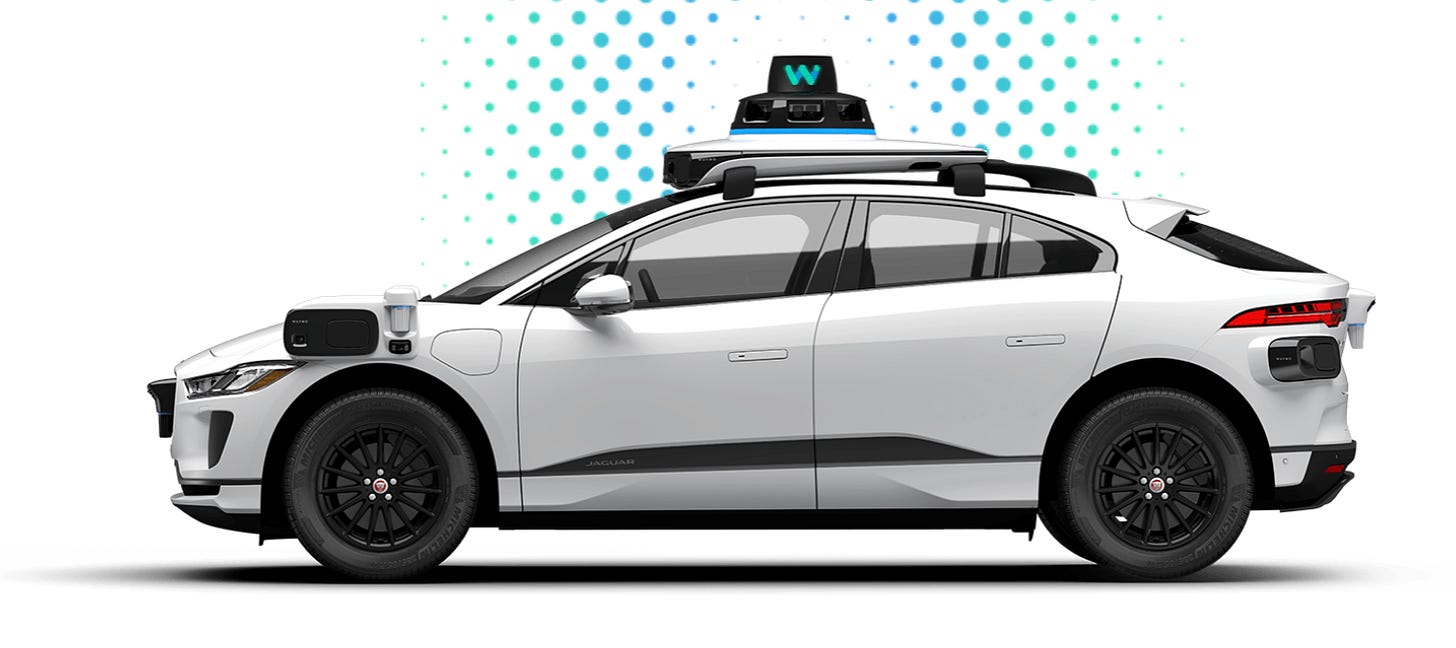"Waymos are 10X safer than humans"
The sooner we replace human drivers, the better.
Lost in the handwringing about driverless cars is that the good ones — Waymos — are already much safer and better drivers than humans.
According to a recent study by Swiss Re using Waymo data, Waymos aren’t a little safer and better than humans. They’re 10X safer and better.
Yes, Waymo supplied the data, and there’s not that much of it, so skepticism is warranted. But, regardless of the exact ratio of superiority, the conclusion is inescapable: Waymos are safer. And, unlike humans, Waymos will only get better.
So the day when most cars are driven by Waymo-like technology instead of humans can’t come soon enough.
(The same cannot be said for Tesla’s “autopilot” technology, which is different from Waymo’s and does not yet provide full autonomy. The cars Tesla is using in its limited ‘robotaxi’ pilot in Austin still need humans in them and still make confounding and dangerous mistakes. Tesla’s cars also still occasionally need to be driven by remote human drivers, because Tesla’s cameras-plus-AI technology doesn’t work well enough. I have a one-sided $1 bet with Elon Musk that Tesla’s technology will never work and that Tesla will have to add the LIDAR and mapping capabilities used by Waymo. But that’s a different question and debate.)
Better is… better
Regulators and consumers should stop insisting that Waymos be perfectly safe before they are rolled out more widely. This sets the bar too high and deprives society of a far better and safer technology than the crappy incumbent one we have to live with today — human drivers.
Humans are extremely flawed driving machines.
We get tired. We get bored. We get interrupted. We get scared and excited. We get mad. We get drunk and stoned. We get careless and stupid.
We humans are also delusional about our driving skills.
73% of us think we’re above-average drivers. (80% of men think this).
And what is the result of our ubiquitous and lousy driving technology?
40,000 people die in the US in human-driven-car accidents every year.
7,000-8,000 pedestrians are killed by human drivers every year.
That’s more than 100 deaths caused by human drivers a day, in the US alone.
That’s the equivalent of a mid-sized airliner plummeting from the sky and killing everyone on it every two days.
The rate at which human drivers kill pedestrians, by the way, is skyrocketing — up 48% last year. Why? Because we humans are driving ever bigger and deadlier cars — in part because we feel safer in them — and we are often distracted while we do it.
If every car on the road was a Waymo, car accidents — and driver, passenger, and pedestrian injuries and deaths — would plunge.
More than 35,000 husbands, wives, children, friends, and relatives would be saved every year.
The truth:
You are safer in a Waymo.
Your friends and families are safer in Waymos.
You and your friends and families are safer driving on roads full of Waymos and walking on or across streets full of Waymos.
Also, enough with the argument that Waymos are bad because they eliminate jobs.
New technology has always eliminated (some) jobs. It has also created more jobs than it has eliminated. So far, there’s no evidence that self-driving will eliminate more jobs than it creates.
Why the sudden rant about the superiority of Waymos vs. humans?
Because the hosts of the excellent podcast “Hard Fork,” Kevin Roose and Casey Newton, interviewed the co-CEO of Waymo, Tekedra Mawakana, this week — and she reminded me of the ass-backwards way many people look at driverless-car safety and job impact.
In addition to walking through the far-superior safety stats above, Mawakana noted that, in Phoenix, where Waymo has been operating without humans for five years, there are still lots of human drivers (in other hail-able taxis).
Many consumers prefer driverless Waymos to human-driven taxis — and some are even willing to pay more to ride in them. But for those who don’t, there are still human-driven Ubers and human-driver jobs.
More importantly, there are many new jobs in Phoenix that didn’t exist before Waymo arrived.
Some of these jobs can be done by people who don’t want to be Uber drivers. Some are (arguably — we’re all different) better jobs than being an Uber driver.
The new jobs that Waymo has created include:
Fleet technicians who maintain the cars
Fleet depot workers
Fleet depot bosses
So, for that and many other reasons, bring on more Waymos!
If you’re still worried about technology eliminating jobs and leading to mass unemployment, please read this about the impact of technology on the job market over the last 150 years. Or listen to my interview with Harvard professor David Deming on this episode of “Solutions.” Unlike many of those are predicting job-doom, Professor Deming has actually studied this question.
Thank you for reading Regenerator!



